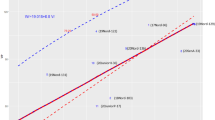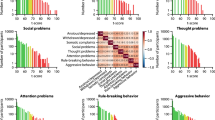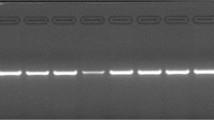Abstract
SEVERAL notable attempts have been made to analyse and interpret the inheritance of polygenic characters in terms of simple Mendelian factors giving the familiar ratios in segregating generations1,2. More recently, Weber3,4 proposed his so-named discriminant analysis technique, in which two or more component measurements of a character that may individually appear to be normally distributed are combined into a discriminant function which, in contrast, might assume generally a bimodal frequency distribution suggesting this linear compound measure to be simply inherited like qualitative traits. He illustrates this method for the cotyledon size in tomato by using a linear function of length/width ratio (x1) and area (x2), x = b1x1 + b2x2, and showing x to have a bimodal frequency distribution in F2 that simulated a segregation ratio of 3 : 1 in one case and of 9 : 7 in the other. Apparently, Dr. Weber considers this method of analysing quantitative characters to be useful in general as he argues3, “this total measurement of discriminant function has no dimensional designation; it is without dimension in the physical sense, like the term red or white colour”.
This is a preview of subscription content, access via your institution
Access options
Subscribe to this journal
Receive 51 print issues and online access
$199.00 per year
only $3.90 per issue
Buy this article
- Purchase on SpringerLink
- Instant access to full article PDF
Prices may be subject to local taxes which are calculated during checkout
Similar content being viewed by others
References
Powers, L., Locke, L. F., and Garrett, J. C., U.S. Dep. Agric. Tech. Bull., No. 998, 1 (1950).
Allard, R. W., Brookhaven Symp. Biol., 9, 69 (1956).
Weber, E., Genetics, 44, 1131 (1959).
Weber, E., Genetics, 45, 567 (1960).
Smith, H. F., Ann. Eugenics, 7, 240 (1936).
Author information
Authors and Affiliations
Rights and permissions
About this article
Cite this article
JAIN, S. Discriminant Analysis in Biometrical Genetics. Nature 191, 1420 (1961). https://doi.org/10.1038/1911420a0
Issue date:
DOI: https://doi.org/10.1038/1911420a0



